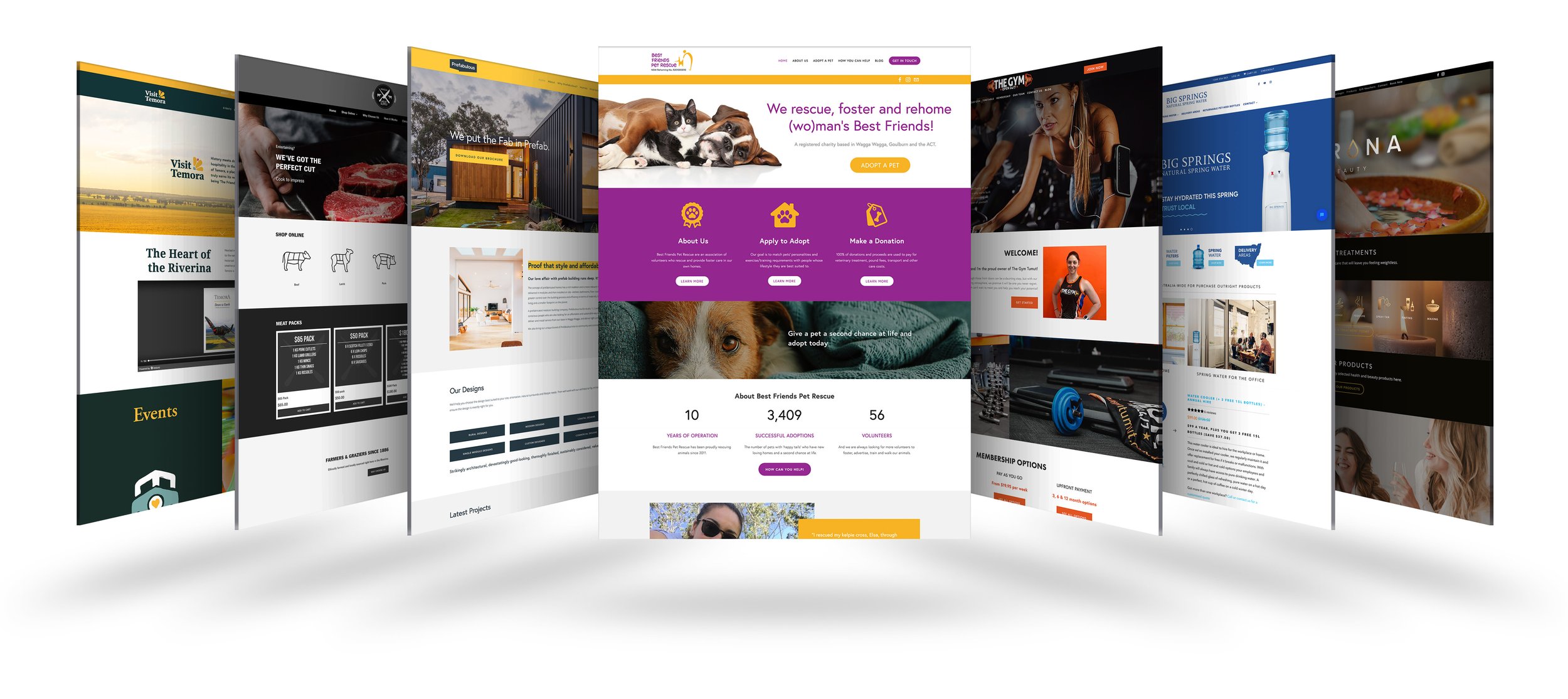Skilled Website Design for Businesses Looking to Increase Leads
Skilled Website Design for Businesses Looking to Increase Leads
Blog Article
Top Tips for Developing an Impactful Website Style That Transforms
In today's digital landscape, the value of an impactful web site style can not be overemphasized, specifically when it pertains to transforming visitors into consumers. To accomplish this, one should consider a selection of aspects, consisting of understanding the target audience, focusing on user experience, and maximizing for mobile systems. Moreover, the calculated usage of engaging call-to-actions and a distinct visual hierarchy plays a crucial duty in assisting individuals via their trip. As we explore these necessary elements, it ends up being evident that the success of your web site hinges on more than simply visual appeal; it needs a thoughtful approach to layout and capability.

Understand Your Target Audience
Recognizing your target market is fundamental to effective web site design, as it prepares for creating an appealing individual experience. Recognizing that your users are, including their demographics, preferences, and actions, enables designers to customize the site's content, format, and performance to satisfy certain requirements.
Conducting comprehensive marketing research is essential in this procedure. Surveys, interviews, and analytics can give beneficial insights into user expectations and pain points. By compiling this data, designers can create customer personalities that stand for various sections of the audience, making sure that style decisions are educated and appropriate.
In addition, comprehending the target audience aids in selecting proper layout elements such as color design, typography, and images that reverberate with customers. A website that talks straight to its target market promotes a sense of link and count on, motivating longer sees and higher conversion rates.
Eventually, a user-centered approach to website style not just enhances individual satisfaction however also supports business goals by driving engagement and loyalty. By prioritizing the needs and choices of the target market, an internet site can effectively serve its objective and achieve preferred end results.
Prioritize User Experience
To boost the general effectiveness of a website, focusing on user experience (UX) is vital (Website Design). A well-designed UX makes certain that visitors can navigate the site effortlessly, find info quickly, and engage with content meaningfully. This results in enhanced user complete satisfaction and higher conversion prices
Begin by executing instinctive navigation. Menus must be rationally structured, permitting users to locate crucial locations of the site with very little effort. Consistency in style components, such as color design and typefaces, fosters experience, which is crucial for preserving customer interaction.
In addition, consider the loading speed of your website. A hold-up of just a couple of secs can result in considerable drop-offs, as users are less most likely to wait for a slow-loading web page. Enhancing images and enhancing code can enhance performance and retain visitors.
Moreover, clarity in material discussion is vital. Use concise, interesting language and separate message important link with visuals to enhance readability. By prioritizing individual experience, you not just develop an extra delightful environment for site visitors yet likewise you can try here strengthen your brand's trustworthiness. Ultimately, a focus on UX is a financial investment in the long-term success of your internet site.
Optimize for Mobile Instruments
Maximizing for mobile gadgets is critical in today's digital landscape, where an enhancing number of individuals gain access to web sites with mobile phones and tablets. A mobile-friendly style not only enhances user experience but also plays a significant role in improving search engine rankings. To achieve this, it is vital to adopt a receptive layout that instantly adapts to different screen sizes and alignments.

Loading speed is an additional vital variable; mobile users are normally less client and anticipate fast access to info. By focusing on mobile optimization, you ensure that your web site continues to be competitive and efficiently involves a more comprehensive audience.
Use Compelling Call-to-Actions
An internet site's effectiveness frequently rests on its capacity to guide visitors toward preferred activities, making engaging call-to-actions (CTAs) crucial components of design. CTAs function as the essential factors that route users to engage with the site, whether that implies buying, signing up for an e-newsletter, or downloading and install a source.
To develop reliable CTAs, quality is vital. Use concise language that clearly connects the activity you want the user to take.
Furthermore, the design of CTAs need to stand out without being interfering. Use contrasting shades and clear font styles to ensure they capture focus. In addition, think about using directional signs, such as arrowheads or pictures, to guide customers towards these buttons. By concentrating on these elements, services can considerably enhance customer interaction, driving conversions and ultimately attaining their site's goals.
Emphasis on Visual Pecking Order
Reliable site layout relies greatly on a well-structured visual hierarchy that overviews users with web content perfectly. By arranging elements in a way that prioritizes info, developers can enhance individual experience and promote decision-making. This includes making use of size, color, contrast, and spacing purposefully to draw interest to one of the most vital parts of a webpage.
Using bigger typefaces for headings and subheadings establishes a clear distinction in between various sections, enabling customers to check content effortlessly. Furthermore, utilizing contrasting shades for switches and calls-to-action can capture individual focus and encourage communication. Whitespace is another necessary element; it protects against clutter and makes it possible for customers to concentrate on essential messages without interruptions.
Images and graphics need to match the text while also adhering to the well established hierarchy, reinforcing the total message (Website Design). Consistency in layout aspects, such as shade systems and typography, more reinforces the aesthetic pecking order, making navigating intuitive

Verdict
In conclusion, effective site design requires an extensive understanding of the target audience, prioritization of customer experience, and mobile optimization. Ultimately, a well-executed site style serves as a crucial part in driving individual actions and attaining company objectives.
Report this page